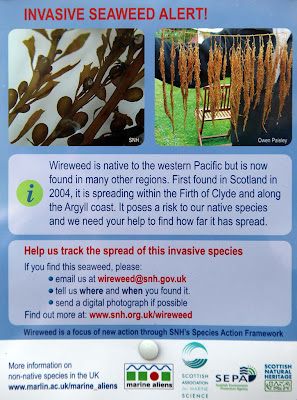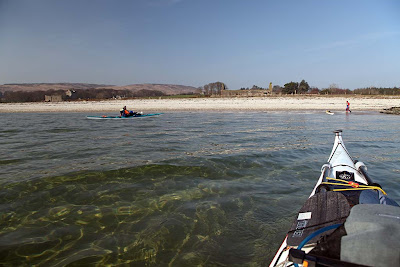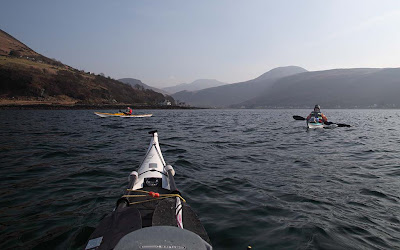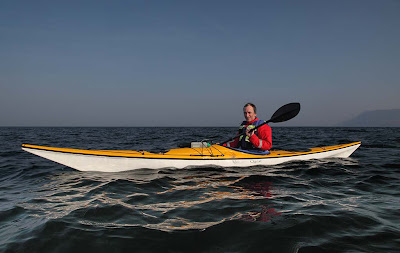
As we paddled up Loch Fyne, David began to lag behind. The bottom of his boat had become coated with the sticky filaments of Fularia Orientalis. Unlike the harmless Fularia Caucasica, which is a native to our waters, this Pacific invader (also known as wireweed, japweed or Sargassum) has no natural predators in the Atlanic.

It first arrived in the Clyde in 2004 and has thrived in Loch Fyne, where it poses a real hazard to kayakers, fishermen, fish farms, oyster beds and yachtsmen. It has a predilection for growing on smooth fiberglass hulls and given good sun light, the filaments can reach 5mm in about 6 hours. This does not sound much but it makes paddling very hard work indeed.
David capsized his boat and got his pan scourer out and scrubbed the bottom of his kayak till it was gleaming. He then found his second wind and disappeared over the horizon!

Sea kayaking visitors to the Clyde (and Loch Fyne on particular) are advised to equip themselves with a scourer before setting off. Don't just get any one out the supermarket as it will be too abrasive and spoil your gel coat. Look out for the ones advertised for cleaning non stick pans.
Kari-tek, the west coast sea kayaking business, can supply especially suitable large ones, these double up as bailing sponges.
Remember to keep your bottom clean. Sea kayakers could spread this unpleasant invader to further, as yet unaffected, waters.
19/03/2009




























